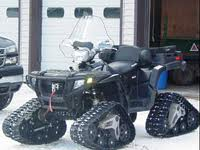Motor Oil: Mineral or Synthetic?
 There are three basic categories when it comes to outboard motor oil: mineral, synthetic and semi-synthetic. Mineral oil is the traditional stuff that is drilled and refined straight from the earth. Synthetic oil is comprised entirely of manmade chemical compounds. Semi-synthetic, as you can probably ascertain, is a combination of the two aforementioned types.
There are three basic categories when it comes to outboard motor oil: mineral, synthetic and semi-synthetic. Mineral oil is the traditional stuff that is drilled and refined straight from the earth. Synthetic oil is comprised entirely of manmade chemical compounds. Semi-synthetic, as you can probably ascertain, is a combination of the two aforementioned types.
So which is the best type? Synthetic oils have the upper hand because scientists have the capability to design the oil to their exact specifications. This allows them to create oil that works well in virtually any conditions and runs cleaner than mineral oil. There used to be the notion that switching from mineral to synthetic or vice-versa was detrimental to your engine, but current research has shown that you can switch back and forth without causing any damage.















